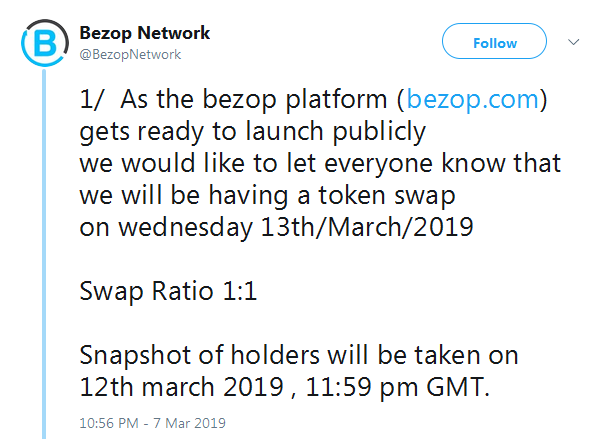Contents
That is, production function is of ‘variable proportion’ type rather than fixed proportion. • Each isoquants is oval shaped – It means that at some point it begins to retreat from each axis. This shape is a result of the fact that if a producer uses more of capital or more of labour or more of both than https://1investing.in/ is necessary, the total product will eventually decline. • Iso-quants are slope downward from left to right – We know that points on isoquants give or yield the same amount of output. When we increase the amount of one factor of production, the amount of others factor of production has to be decreased.
Therefore different Isoquants represent different quantities of output. Isoquants nearer to origin represent less quantity of output and vis-a-visa. If we have numerous Isoquants then we can depict the isocline, ridge line and expansion path. An Isoquant represents the different combinations of two variable inputs used in the production of a given amount of output. A decrease in MRTS along an isoquant is called the declining marginal rate of substitution for generating the same level of output.
- This is so because when the quantity of labour is increased, shown on the diagram , the quantity of capital must be reduced so as to keep output constant.
- Production can be defined as the process of converting the inputs into outputs.
- Here you can find the meaning of Why isoquants are negatively sloped ?
- An isoquant is the set of all possible combinations of the two inputs that yield the same maximum possible level of output.
The iso-price line is much like the value or budget line of the indifference curve evaluation. It is the line which reveals the assorted combinations of things that may lead to the identical level of complete value. It refers to these totally different combinations of two factors that a agency can obtain at the same cost. The slope of the isoquant measures the speed at which capital can substitute for labour, maintaining output fixed. This slope is known as the marginal fee of technical substitution of capital for labour . The substitution between the two factors is technically possible.
Explain why demand curve for foreign currency is negatively sloped?
Let us suppose that there are two factors namely., labour and capital. An Iso-quant schedule shows the different combinations of these two inputs that yield the same level of output. This could be valid if the law of increasing returns applied. But in practical world, the principle of diminishing MRTS generally hold good and it makes the equal product curves convex to the origin. Producer’s equilibrium implies a situation in which a producer maximises his/her profits.

A household of isoquants may be represented by an isoquant map, a graph combining a variety of isoquants, each representing a unique quantity of output. A decline in MRTS along an isoquant for producing the same stage of output is known as the diminishing marginal price of substitution. If the agency hires another unit of labor and moves from level to , the agency can cut back its capital by three models but stays on the same isoquant, and the MRTS is 3. Diminishing returns to scale refers to a situation in which output increases in lesser proportion than increase in factor inputs. For example, when capital and labour are doubled, but the output generated is less than double, the returns to scale would be termed as diminishing returns to scale. A curve showing the combinations of factor inputs that have constant market cost.
1) The firm is using only two factors of production that are capital and labour. Returns to ScaleReturns to scale implies the behaviour of output when all the factor inputs are changed in the same proportion given the same technology. As discussed, Isoquants represent combination of inputs which can be produced the given level of output.
Thus, he /she chooses the quantity of inputs and output with the main aim of achieving the maximum profits. There are only two factors of production, labour and capital.5) Inelastic supply of factors in the short-run period. Therefore, the manufacturer is responsible for determining the combination of the factors of production, which best achieve this result. The decision made by the producer relates to the MRTS and the substitution principle.
How do you draw an Isoquant curve?
The manufacturing may be increased to 200 models by rising the capital from OC to OC1 and labor from OL to OL1. Isoquants are sometimes mixed with isocost strains so as to remedy a cost-minimization drawback for given degree of output. A line joining tangency points of isoquants and isocosts is called the expansion path.

An isoquant is a curve that shows all the combinations of two inputs that give same level of output. It is also known as equal production curve or production indifference curve. A constant return to scale implies the situation in which an increase in output is equal to the increase in factor inputs. For example, in the case of constant returns to scale, when the inputs are doubled, the output is also doubled. An isoquant is the set of all possible combinations of the two inputs that yield the same maximum possible level of output. Each isoquant represents a particular level of output and is labelled with that amount of output.
The MRTS diminishes because the two components are not excellent substitutes. In figure 5, for each improve in labor models by (ΔL) there is a corresponding lower within the units of capital (ΔK). A technical relation that shows how inputs are converted into output is depicted by an isoquant curve. It shows the optimum combinations of factor inputs with the help of prices of factor inputs and their quantities that are used to produce the same output.
(i) An Isoquant Slopes Downward from Left to Right:
As we move from point A to B, from B to C and from C to D along an isoquant, the marginal price of technical substitution of capital for labour diminishes. Everytime labour models are increasing by an equal amount however the corresponding lower in the items of capital decreases. An isoquant curve is the representation of a set of locus of various combinations of two inputs which yield the same degree of output. It is also known as or equal product curve or producer’s indifference curve. The MRTS reflects the give-and-take between elements, such as capital and labor, that permit a agency to maintain a constant output. MRTS differs from the marginal rate of substitution because MRTS is targeted on producer equilibrium and MRS is concentrated on shopper equilibrium.
The isoquant is convex to the origin because the marginal rate of technical substitution between the inputs is diminishing. An isoquants is also called equal product curve or iso-product curve. It describes the agency’s different strategies for producing a given level of output. This video explains tips on how to calculate and use the marginal rate of technical substitution . Adding one input whereas holding the opposite fixed ultimately leads to decreasing marginal output, and this is mirrored in the form of the isoquant.
An isoquants shows all those combinations of factors which produce same level of output. In Economics, an iso-quant is a curve drawn by joining the combinations of changing the quantities of two or more inputs which give the same level of output. • Higher isoquants represents higher level of output – An isoquant lying on the right indicates larger amount of output. That is on the higher isoquant we have either more units of one factor of production or more units of both factors.
Why is an Isoquant curve convex to the origin?
If the isoquants are concave to the origin, it would mean that the MRTS increased as more and more of a factor capital was replaced by factor labour . The function assumes that the logarithm of the total output of the economy is a linear function of the logarithms of the labour force and capital stock. Production function of the linear homogenous type is invested by Junt wicksell and first tested by C. This famous statistical production function is known as Cobb- Douglas production function.
Factors of production can be divided into small parts. As like as we get OP by joining together the points D, E and F. In economics the line OP and OQ are known as Ridge lines.
Information about Why isoquants are negatively sloped ? Covers all topics & solutions for Commerce 2023 Exam. Find important definitions, questions, meanings, examples, exercises and tests below for Why isoquants are negatively sloped ? Higher IQs show higher outputs and lower IQs show lower outputs, for upper iso-quant curve implies the use of more factors than the lower isoquant curve. Are capable of producing the same level of output. An iso-product curve can be drawn with the help of isoquant schedule.
GST Software
The MRTS is the slope of a graph representing one element on every axis. The slope of the MRTS is an isoquant or a curve connecting the two input points as long as the output stays the same. Eleven at level B, the marginal rate of technical substitution is AS/SB, t point G, it’s BT/TG and at H, it is GR/RH. Thus, an Iso-product the slope of iso-quant explains or Iso-quant curve is that curve which exhibits the different combos of two elements yielding the same complete product. It slopes downwards from left to right indicating that the factors are substitutable. If more of one factor is used, less of the other factor is needed for producing the same level of output.
Production function may involve, at a time, the use of more than one variable input. This is presented with the help of iso- quant curves. The two words ‘Iso’ and ‘quant’ are derived from the Greek language, meaning ‘equal’ and ‘quantity’ respectively. In our presentation only two factors, labour and capital are used. Production can be defined as the process of converting the inputs into outputs. Inputs include land, labour and capital, whereas output includes finished goods and services.